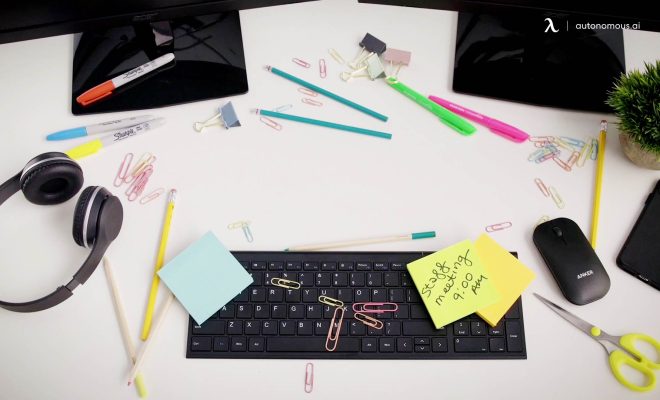How to Organize Stationery: 9 Steps

Organizing your stationery can make it easier to find the materials you need when you need them, and also ensure that your working space remains clutter-free. Follow these 9 simple steps to help organize your stationery effectively.
1. Gather your stationery: Begin by collecting all the stationery items you have around your home or office. This includes pens, pencils, notebooks, sticky notes, erasers, rulers, paper clips, and any other supplies you use regularly.
2. Sort and categorize: After gathering all the items, start sorting them into different categories such as writing instruments, notepads, and desk accessories. This will make it easier for you to find specific items when needed.
3. Purge unused or expired items: Look through your stationery and remove any items that are worn out, expired, or no longer serve a purpose. This will help reduce clutter in your workspace.
4. Choose storage solutions: Invest in appropriate storage containers for each category of stationery item. You can use pencil cases for writing instruments, drawer dividers for smaller accessories like paper clips and push pins, file organizers for notepads and papers, and stationary trays for general organization.
5. Label the storage containers: Clearly label each storage container based on its contents so that you can easily locate items when needed. Labels also make it simple to maintain your organizational system over time.
6. Arrange your stationery within easy reach: Place the most frequently used items within easy reach on your desk or in drawers close at hand. This will prevent unnecessary interruptions while working.
7. Establish a designated space for each item: Assign a specific spot for each type of stationery item and ensure that everyone who uses the space respects this organization system. This will help prevent confusion and misplaced items.
8. Maintain your organizational system: To keep your stationery organized over time, make a habit of putting items back in their designated spots after use. Regular maintenance will make it easier to keep everything in order.
9. Re-evaluate your system periodically: Every few months, take the time to reassess your stationery organization system. Remove any items that you no longer need, replace damaged or worn-out supplies, and make any necessary adjustments to your storage methods.
By following these nine steps, you’ll create an organized and efficient workspace that allows you to easily access your stationery when needed. This will not only save you time but also help maintain a clutter-free environment that fosters productivity.

